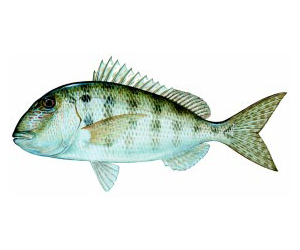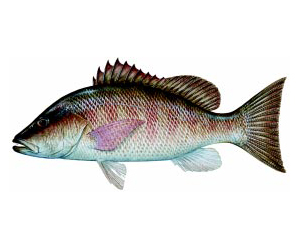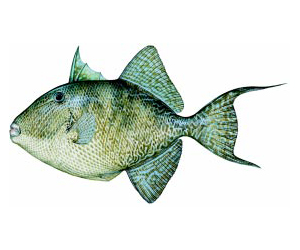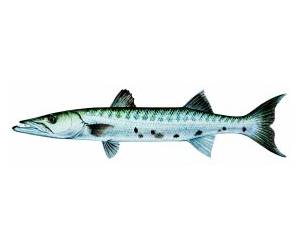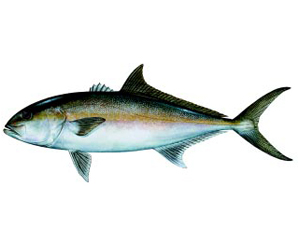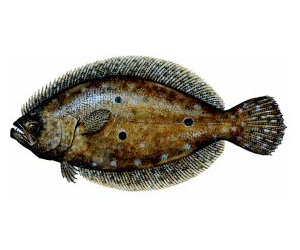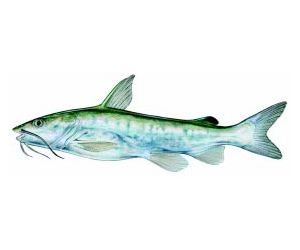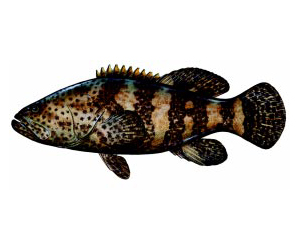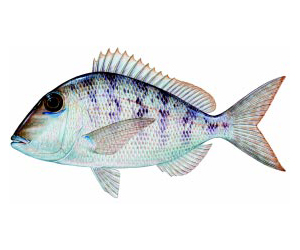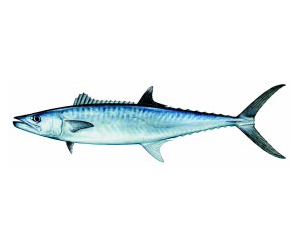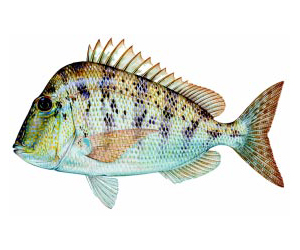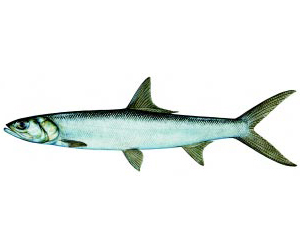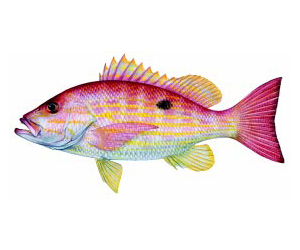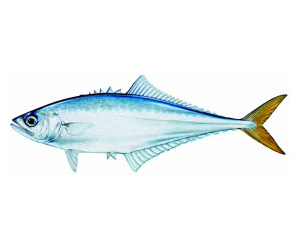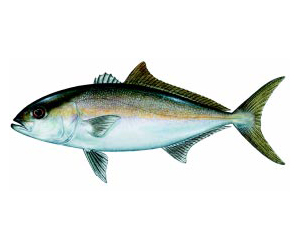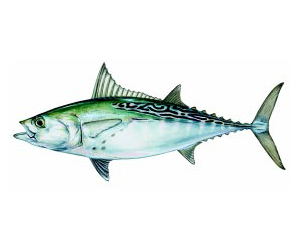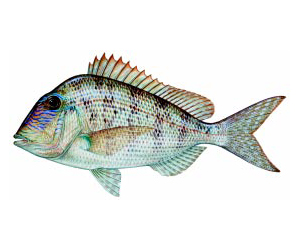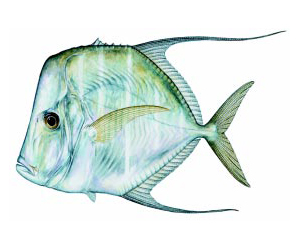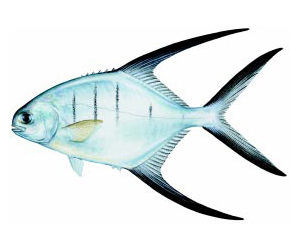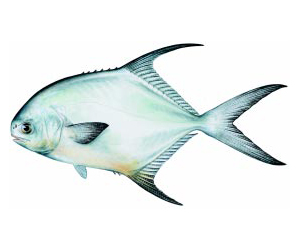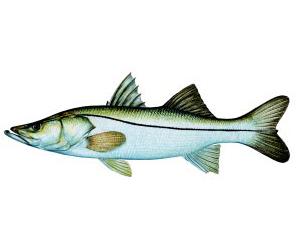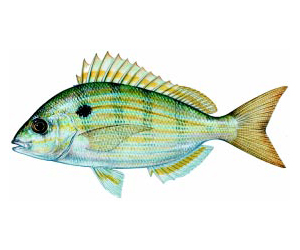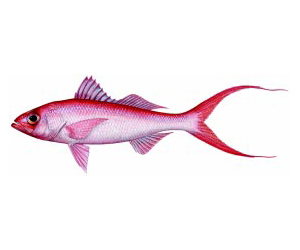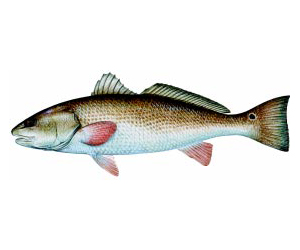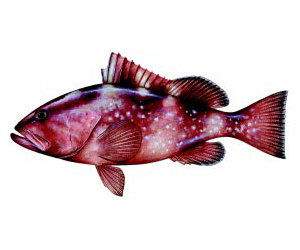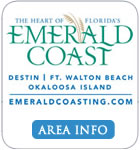- African Pompano
- Almaco Jack
- Atlantic Bumper
- Atlantic Croaker
- Atlantic Sharpnose Shark
- Atlantic Spadefish
- Atlantic Thread Herring
- Ballyhoo
- Banded Rubberfish
- Bigeye Scad
- Black Drum
- Black Grouper
- Blackfin Tuna
- Blacknose Shark
- Blacktip Shark
- Blue Marlin
- Blue Runner
- Bluefish
- Bonnethead Shark
- Cero (Cero Mackerel)
- Cobia
- Common Snook
- Crevalle Jack
- Cubera Snapper
- Dolphin
- Florida Pompano
- Gafftopsail Catfish
- Gag Grouper
Fish Photos Page 2
- Grass Porgy
- Gray Snapper (Mangrove Snapper)
- Gray Triggerfish
- Great Barracuda
- Greater Amberjack
- Gulf Flounder
- Hardhead Catfish
- Jewfish/Goliath
- Jolthead Porgy
- King Mackerel
- Knobby Porgy
- Ladyfish
- Lane Snapper
- Leatherjacket
- Lesser Amberjack
- Little Tunny
- Littlehead Porgy
- Lookdown
- Palomenta
- Permit
- Pigfish
- Pinfish
- Queen Snapper
- Red Drum
- Red Grouper
- Red Porgy
- Red Snapper
- Round Scad
- Sailfish
- Sand Perch
- Sand Seatrout
- Sandbar Shark
- Scamp
- Sheepshead
- Shortfin Mako
- Silk Snapper
- Silver Perch
- Southern Kingfish
- Spanish Mackerel
- Spot
- Spottail Pinfish
- Spotted Seatrout
- Swordfish
- Tarpon
- Tomtate
- Tripletail
- Vermillon Snapper
- Wahoo
- Warsaw Grouper
- White Grunt
- White Marlin
- Yellowfin Tuna
- Yellowmouth Grouper
Grass Porgy
Deep-bodied amberjack; sometimes darker in coloration; front of soft dorsal and of anal fins high and elongated; body more flattened than banded rudderfish or greater amberjack; no scutes. Similar fish: other Seriola. Normally found: wide-ranging in OFFSHORE waters, not a common catch; young are associated with Sargassum. Size: usually less than 20 pounds.
Gray Snapper (Mangrove Snapper)
Description: Silvery to golden below; anal and caudal fins yellowish; conspicuous black saddle on caudal peduncle and small black area at edge of opercle; lower profile more arched than upper profile; lateral line strongly arched toward front. Size: to 30 cm (1 ft.). Normally found: one of the most abundant inshore fishes in tropical America; commonly enters bays and estuaries.
Gray Triggerfish
Entirely olive-gray; dorsal and anal fins marbled; caudal fin lobes elongate in large adults; one or more enlarged scales behind gill opening; 26 to 29 dorsal fin rays; 23 to 26 anal fin rays. Young: large darker saddles on back (these saddles sometimes persist in adults); blue spots and short blue lines in dorsal fin and on upper half of body, becoming white below and in anal fin; upper rim of eye blue. Normally found: hardbottom, reefs, ledges.
Great Barracuda
Gray, with a greenish cast above, whitish below; many irregular, small black blotches on lower side; 18 to 22 diagonal dark bars on upper side (not always evident); caudal fin dark with white tips; 75 to 87 lateral line scales; no fleshy tip on jaw. Young (not shown): dark stripe on side; stripe breaks into dark squarish blotches as fish grows. Size: to 2 m (6 ft.) and 48 kg (106 lbs.); reports of larger fish unverified. Normally found: young live in inshore seagrass beds; adults range from inshore channels to open ocean. Remarks: most attacks on people have occurred when they were wading or swimming in turbid water while wearing bright objects, attempting to spear a barracuda, or carrying speared fish; flesh of smaller fish apparently not poisonous, but larger fish sometimes very toxic due to ciguatera; no safe, reliable way of recognizing toxic fish.
Greater Amberjack
Dark stripe (variably present) extends from nose to in front of dorsal fin and “lights up” when fish is in feeding mode; no scutes; soft dorsal base less than twice the length of the anal fin base. Similar fish: other Seriola. Normally found: OFFSHORE species associated with rocky reefs, debris, and wrecks, typically in 60-240 feet of water; sometimes caught NEARSHORE in south Florida; juveniles associate with floating objects and may occur in water less than 30 feet deep. Size: common to 40 pounds.
Gulf Flounder
Body color brown, its shade depending on color of bottom, with numerous spots and blotches; 3 prominent eye-like spots forming a triangle; one spot on lateral line, one above, one below; numerous white spots scattered over body and fins (albigutta, white spotted); strong canine-like teeth; caudal fin in shape of wedge, its tip in the middle. Similar fish: southern flounder, P. lethostigma (no eye-like spots; color pattern is key to distinguishing the two species). Normally found: INSHORE on sandy or mud bottoms, often ranging into tidal creeks; occasionally caught on NEARSHORE rocky reefs. Size: common to 2 pounds, generally smaller than southern flounder. Remarks: hatches into usual fish form, but right eye migrates overt to left side early in life; a bottom dweller; thought to spawn offshore; feeds on crustaceans and small fishes.
Hardhead Catfish
Brownish to gray-green; white to yellowish below; fin spines with no fleshy filaments; barbel at corner of mouth not very flattened and shorter than head; four barbels on chin. Size: to 60 cm (2 ft.) and 5.5 kg (12 lbs.) but usually much smaller. Normally found: same as for gafftopsail catfish usually much more common. Remarks: commonly caught from catwalks, bridges, and piers, particularly in passes and inland waterways; edible, but generally not eaten.
Jewfish/Goliath
Head and fins covered with small black spots; irregular dark vertical bars present on the sides of body; pectoral and caudal fin rounded; first dorsal fin shorter than and not separated from second dorsal; adults huge, up to 800 pounds; eyes small. Similar fish: other grouper. Normally found: NEARSHORE around docks, in deep holes, and on ledges; young often occur in estuaries, especially around oyster bars; more abundant in southern Florida than in northern waters. Size: largest of the groupers. Remarks: spawns over summer months; lifespan of 30 to 50 years; feeds on crustaceans and fish. NOTE: jewfish are totally protected from harvest in Florida waters.
PROTECTED SPECIES ACT: *Must remain in whole condition until landed ashore (heads & tails intact) # Measured as total length. + Harvest prohibited by or with the use of any multiple hook in conjunction with live or dead natural bait.
Jolthead Porgy
Generally silvery to brassy, with a bluish cast; front of head brown, with blue line along lower rim of eye; a whitish stripe below eye, and another between eye and mouth; corner of mouth orange. Size: to 60 cm (2 ft.) and 3.6 kg (8 lbs.). Normally found: coastal waters to 45 m (150 ft.).
King Mackerel
Color of back iridescent bluish green, sides silvery; streamlined body with tapered head; no black pigment on front of the first dorsal fin; lateral line starts high and drops sharply below the second dorsal fin; young fish often have yellowish spots like those of Spanish mackerel. Similar fish: cero, S. regalis; Spanish mackerel, S. maculatus. Normally found: NEARSHORE and OFFSHORE; occasionally taken from piers running into deep water. Size: common to 20 pounds. Remarks: schooling fish that migrates from south Florida waters in winter to more northerly waters in spring; Gulf population thought to be separate from Atlantic population, with considerable mixing in winter from Cape Canaveral past Key West; spawns in mid summer OFFSHORE; feeds on small fish and squid.
Knobby Porgy
Body deep; front profile very steep; nape projects strongly in large adults; body generally silvery, with a rosy cast; cheek and snout dark purplish gray, with many bronze spots; large blue spot at axil of pectoral fin. Size: to 46 cm (18 in.). Normally found: hardbottom, reefs, ledges.
Ladyfish
Terminal mouth; slender body; small scales; last dorsal ray not elonged; head small and pointed. Similar fish: juvenile tarpon, Megalops atlanticus. Normally found: INSHORE fish, in bays and estuaries; occasionally enters freshwater, occurring in tidal pools and canals; often forms large schools and harasses bait at the surface. Size: up to 2 to 3 pounds. Remarks: known to spawn OFFSHORE; ribbon-like larvae very similar to Albua and Megalops, peaking in fall; adults feed predominantly on fish and crustaceans; leaps when hooked.
Lane Snapper
Color silvery-pink to reddish with short, irregular pink and yellow lines on its sides; diffuse black spot, about as large as the eye; the dorsal fin centered above the lateral line; outer margin of caudal fin blackish. Similar fish: mutton snapper, L. analis (anal fin rounded in lane snapper, pointed in mutton). Normally found: juveniles INSHORE over grass beds or shallow reefs; adults OFFSHORE; most common in south Florida. Size: usually less than 1 pound. Remarks: spawns March to September, sexually mature at 6 inches; feeds on the bottom, taking crustaceans, mollusks, and fish.
Leatherjacket
Body silvery, bluish above; fins yellow; rear parts of dorsal and anal fins consist of a series of finlets; spinous dorsal fin has 5 well-developed, unconnected spines; lateral line nearly straight; scales tiny, embedded; skin appears smooth. Size: to 30 cm (1 ft.). Normally found: enters bays and estuaries, often in turbid water.
Lesser Amberjack
Olive green or brownish back and silver sides; dark band (variably present) extends backward and upward from eye; juveniles have split or wavy bars on sides; proportionately larger eye and deeper body than greater amberjack. Similar fish: other Seriola. Normally found: NEARSHORE and OFFSHORE, apparently living deeper than other Seriola (commonly 180-410 feet deep). Size: usually under 10 pounds. Remarks: believed to spawn offshore; adults eat fish, and squid.
Little Tunny
Diagonal, sometimes wavy, dark bars on bare areas on each side of back; 4 to 5 dark spots below pectoral fin; no dark stripes on belly; dorsal fins connected at base; pectoral fin short. Size: to 1 m (3.25 ft.) and 12 kg (26 lbs.), but usually much smaller. Normally found: common offshore, but also occurs regularly in bays and over reefs. Remarks: probably the most common tuna in the w. Atlantic; popular sport fish, it is also used as bait for marlin; occurs in large schools.
Littlehead Porgy
Similar to the knobbed porgy, but snout and cheek bluish gray, with many wavy, dark blue lines; areas between lines sometimes brassy; each scale on upper body has a dark bluish line through the center; these lines unite to form a narrow line along each scale row. Size: to 46 cm (18 in.).
Lookdown
Silvery, iridescent, sometimes with brassy highlights; body extremely compressed and deep, platelike; front of head very steep; lobes at front of soft dorsal and anal fins very long; pelvic fins small; lateral line arched toward front. Young: spines at front of dorsal fin and rays in pelvic fin streamerlike. Size: to 30 cm (1ft.).
Palomenta
Gray to blue-green on top of head and along the back; bright silvery sides; yellow on breast; elongated dorsal and anal fins, dusky or black with bluish edges; deep body, with four narrow bars high on the sides, and traces of a fifth nearer the tail; no scutes. Similar fish: pompano, T. carolinus; permit, T. falcatus. Normally found: in clear water along sandy beaches and bays, occasionally found over reefs; most common in south Florida. Size: rarely over 1 pound, reported to 3 pounds. Remarks: thought to spawn offshore in spring, summer, and fall; has shown rapid growth in mariculture experiments; readily strikes small artificial lures.
Permit
Color gray, dark or iridescent blue above,shading to silvery sides, in dark waters showing golden tints around breast; small permit have teeth ontongue (none on pompano); no scutes; dorsal fin insertion directly above that of the anal fin; 17 to 21soft dorsal rays; 16 to 19 soft anal rays. Similar fish: Florida pompano, T. carolinus; the permit is deeper bodied; dorsal body profile forms angle at insertion of second dorsal fin; pompano rarely grow larger than 6 pounds, permit common to 40 pounds. Normally found: OFFSHORE on wrecks and debris, INSHORE on grass flats, sand flats, and in channels; most abundant in south Florida, with smaller-specimens from every coastal county. Size: common to 25 pounds. Remarks: feeds mainly on bottom-dwelling crabs, shrimp, small clams, and small fish.
Pigfish
Gray, often with a bluish cast; many bronze to yellowish spots, dashes, and other small markings; mouth small, ending below front nostril. Size: to 38 cm (15 in.). Normally found: bay and banks; not on reefs in water less than 60 ft.
Pinfish
Small mouth with incisor-like teeth; distinctive black spot behind the gill cover; body bluish-silver with blue and orange yellow horizontal stripes, yellow fins. Normally found: seagrass beds, bridges, piers, marker pilings, and around natural and artificial reefs; spawn offshore. Size: usually less than 8 in. Remarks: popular live bait, notorious bait stealers.
Queen Snapper
Color of back and upper sides red, lower sides; silvery body long and slender; dorsal fin distinctly notched; large eyes; caudal fin deeply forked; no dark lateral spot. Similar fish: other snappers. Normally found: OFFSHORE over rocky reefs of the continental shelf to 450 feet; young suspend at mid-depths. Size: small species, usually less than 20 inches. Remarks: little is known, but it is reported that adults live at depths greater than 400 feet.
Red Drum
Chin without barbels; copper-bronze body, lighter shade in clear waters; one to many spots at base of tail (rarely no spots); mouth horizontal and opening downward; scales large. Similar fish: black drum, Pogonias cromis. Normally found: juveniles are an INSHORE fish, migrating out of the estuaries at about 30 inches (4 years) and joining the spawning population OFFSHORE. Size: common to 20 pounds. Remarks: red drum are an INSHORE species until they attain roughly 30 inches (4 years), then migrate to join the NEARSHORE population; spawning occurs from August to November in NEARSHORE waters; feeds on crustaceans, fish, and mollusks; longevity to 20 years or more.
Red Grouper
Color brownish red; lining of mouth scarlet orange; blotches on sides in unorganized pattern; second spine of dorsal fin longer than others; pectoral fins longer than pelvic fins; squared off tail; margin of soft dorsal black with white at midfin; black dots around the eyes. Similar fish: nassau grouper, E. striatus. Normally found: bottom dwelling fish associated with hard bottom; juveniles OFFSHORE along with adults greater than 6 years old; NEARSHORE reefs. Size: common to 15 pounds. Remarks: spawns in April and May; prefer water temperatures between 66 and 77 degrees F; undergoes sex change, young individuals female, becoming male as they age, lifespan of at least 25 years; feeds on squid, crustaceans, and fish.
Red Porgy
The only American porgy with a rear nostril that is round (not slit-like); head and body silvery red, with many tiny blue spots. Size: to 91 cm (3 ft.). Normally found: deeper part of continental shelf, but young occur in water as shallow as 18 m (60 ft.).
Illustrations by: Diane Rome Peebles Data From Florida Fish and Wildlife Conservation Commission.
For additional information on Saltwater Fishing Regulations... click here.
PROTECTED SPECIES ACT: It is unlawful to harvest, possess, land, purchase, sell, or exchange the following species: Nassau Grouper, Goliath Grouper (Jewfish), Sawfish, Basking Shark, Whale Shark, Spotted Eagle Ray, Sturgeon, White Shark, Sand Tiger Shark, Bigeye Sand Tiger Shark, Manta Ray, Spiny Dogfish, Longspine Urchin, Stony, Hard and Fire Corals, Sea Fans, Florida Queen Conch and Bahama Starfish. Harvest of live rock in state waters is prohibited. SEATROUT REGIONS “Northeast Region” means all state waters lying north of the Flagler-Volusia County Line to the Florida-Georgia border, and adjacent federal Exclusive Economic Zone (EEZ) waters. “Northwest Region” means all state waters north and west of a line running due west from the westernmost point of Fred Howard Park Causeway (28E9.350’N 82E48.398’W.), which is approximately 1.17 nautical miles south of the Pasco-Pinellas County Line to the Florida-Alabama border, and adjacent federal EEZ waters. “South Region” means state waters lying between the Flagler-Volusia County Line on the Atlantic Ocean and the southern boundary of the Northwest Region on the Gulf of Mexico in Pinellas County and adjacent federal EEZ waters. ORNAMENTAL TROPICAL FISH AND PLANTS MINIMUM SIZE LIMIT (Total length) Spanish Hogfish 2” Spotfin Hogfish 3” Porkfish 11/2” MAXIMUM SIZE LIMIT (Total length) Angelfish (except Rock Beauty) 8” Butterflyfish, Jawfish 4” Rock Beauty 5” Gobies 2” Spanish Hogfish 8” Spotfin Hogfish 8” BAG LIMIT Fishes / Invertebrates: 20 per person per day. No more than 5 Angelfish and no more than 6 Octocoral colonies PLANTS: 1 gallon per person per day. Live landing and live well requirements. Harvest in Biscayne National Park & John Pennekamp State Park prohibited.

